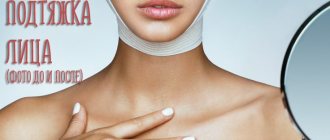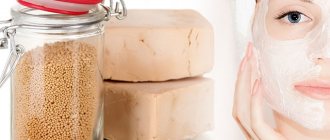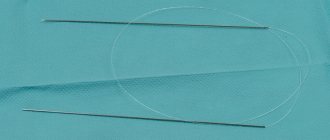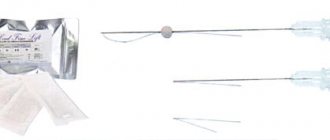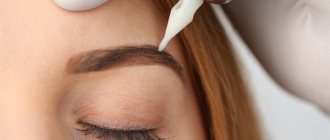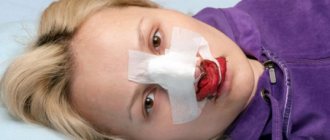Why complications may occur
Plastic surgery is a surgical procedure like any other. It occurs with tissue damage, which is necessary when general anesthesia is administered. The operation is performed not just by a surgeon, but by a specialist who has undergone appropriate training. The intervention is complemented by a rehabilitation period, which has its own characteristics. That is, rejuvenation itself does not occur instantly, but will consist of several stages. And deviations in any of them can cause complications after a facelift. The causes of their occurrence can be clearly divided into groups:
Performing an endoscopic facelift
Doctor's mistakes . They may relate to violations of the technique of performing the operation (dissection of tissue, maintaining blood supply to different parts of the face, suturing) or neglect of the rules of sterility. This reason causes several complications at once, or first one of them. But then the problem along the chain entails others.
The patient's diseases and body characteristics . Plastic surgery is no longer performed by young people who may have problems such as high blood pressure and elevated blood glucose levels. They affect the speed and quality of tissue healing and pose obstacles to the normal rehabilitation process. The characteristics of the body may not be recognized before surgery. This, for example, is a tendency to form hypertrophic scars and rejection of suture material. Violations of the rules of the rehabilitation period . In order for regeneration to take its course, you have to give up a lot for a while and make some efforts. If the patient is in a hurry to return to his previous life and habits, this can disrupt the restoration processes in the healing tissues. Smoking occupies a special place in this group of causes of complications.
We recommend reading about
surgical facelift
. You will learn about what this plastic surgery is, who it is indicated for, contraindications for it, the stages of a facelift and the recovery period.
Here
Read more about facelift with mesothreads.
Problems with endoscopic lift
Complications of an endoscopic facelift are similar to those encountered with a circumferential facelift. This is swelling, which is inevitable even with a well-performed operation, and bruises. Other problems also occur:
- Dark spots . Formed at cut points as a reaction to damage. Usually the complication goes away on its own.
- Facial asymmetry . It may occur due to tissue overstretch or errors during liposuction.
- Violation of facial expressions . It is detected due to nerve damage. The return of muscles to their previous functions is possible 3 months after their independent recovery.
- Formation of scars at the sites of skin punctures . During endoscopy they are small, but due to problems with suture healing, islands of hypertrophied tissue may appear.
- Hair loss . It is found in the area of prolonged incisions on the temples and behind the ears.
Options for complications
The problems patients face after a facelift vary. Some are detected soon after the end of the operation, even before discharge from the hospital. Others cause concern in the late rehabilitation phase.
Edema
Swelling after a facelift occurs even with the correct actions of a specialist and undisturbed rehabilitation process. The accumulation of fluid and an increase in its volume is a protective reaction to tissue damage. Normally, it reaches its maximum on the 3rd day after surgery. From this moment the swelling begins to subside. And by the 10th - 14th day, the excess fluid is mostly eliminated.
The day after facelift surgery
Naturally, swelling after a circular facelift will be more extensive if it is full and fleshy. Indeed, in this case, trauma will affect a larger number of tissues. Problems with the heart, blood vessels, and kidneys, even if they did not prevent the plastic surgery, can cause swelling to linger for a long time.
Hematomas
After facelift surgery, the patient may experience bleeding. This in itself is a complication, but it also leads to another problem - hematomas. The accumulation of blood in some areas of the face is manifested by increased pain, dark spots on the skin, and blood leaking through the stitches. An increase in tissue volume in the area of accumulation of biological fluid also becomes obvious. If a problem occurs, it is detected 4 to 6 hours after surgery.
A-on the 4th day after surgery; In a week
Minor bruises after a facelift are removed by a doctor through a suture or using suction. A more serious problem, where blood continues to leak, resulting in a tense hematoma, will require opening the wound, clearing it of blood clots, and sealing the vessel.
Seam problems
Inflammation and divergence of sutures with the addition of an infectious process of sutures
Suturing is the final stage of the operation. Some of them are removed 5 days after the intervention, others even later. Primary healing should be accompanied by the formation of crusts on the surface, under which tissue epithelization occurs.
If the stitches become inflamed, that is, they become red, become wet, and hurt, this is already a complication. It can be caused by intolerance by the body to the material from which the thread is made. The same thing happens when the wound is not drained properly. Poor healing can be caused by a hematoma. Reduced immunity, vascular, endocrine disorders, chronic diseases make the initial tightening of sutures slower. It may be accompanied by the release of serous fluid. In such cases, specialists prescribe the intake of ascorbic acid, zinc, and amino acids in advance. They stimulate tissue regeneration.
Normally, the sutures after a circular facelift should no longer look inflamed on the 7th - 8th day, since primary healing occurs at this time. If this is not the case, you need to consult a doctor to determine the cause of poor tightening.
Necrosis
— a patient with tissue necrosis in the parotid area after a facelift; B - 13 months after surgical treatment
Ignoring problems with suture healing, as well as disruption of the blood supply to the skin area, can lead to necrosis. This dangerous complication occurs due to too much tissue detachment or too much tension. The latter leads to non-closure of the seam line. As a rule, the skin behind the ears is affected. This is an area where tension is especially active. But the problem can also appear in the area of the temples and in front of the ears.
In addition to medical errors, necrosis can be caused by atherosclerosis and diabetes that the patient has. An undetected hematoma can also lead to this consequence. Fortunately, necrosis after facial surgery is rare.
Wound suppuration
Wound infection after facelift
The discharge of purulent fluid from a postoperative wound and inflammation are also rarely detected. The reasons for this phenomenon are the presence of a hematoma, the development of necrosis, and the entry of hair and other foreign particles into it. To avoid suppuration of the wound, it is washed more than once during the operation, and at the end a drainage system is installed to drain excess fluid.
If a problem does arise, treatment depends on the cause. Sometimes taking antibiotics and appropriate external treatment is sufficient. In more dangerous cases, the suppuration is opened, the wound is cleaned, drained and stitches are applied again.
Scarring
Keloid scar
Problems with suture healing can result in thick scars instead of barely noticeable ones. The same thing occurs for some due to a tendency to hypertrophy that exists by nature. The problem also appears due to tight skin tension.
Scars have to be treated additionally, for which there are several methods. It can be:
special ointments that absorb excess tissue; hormone injections aimed at providing the same effect; surgery.
The photo shows an example of a well-performed surgical facelift
Facial oval deformation
A facelift is needed, among other things, to give clarity to the contours of the face. But with other positive moments after it, this goal may remain unattainable. The patient complains that his lumps do not disappear after a facelift. Such deformation occurs as a result of the formation of small hematomas by the subcutaneous fat layer or displacement of areas, uneven or excessive removal of fat in the chin area. The problem is corrected by repeated surgery.
Hair loss
Postoperative sutures for a circular lift are placed on the scalp. And this can cause the hair to thin out in the behind-the-ear and temporal areas. The culprits are thinning areas of the skin and damage to the hair follicles. For most, the problem is resolved without intervention after 3 to 4 months, when the follicles are restored. If this does not happen, you have to excise the scar that is interfering with hair growth or transplant skin from other areas.
Thinning hair can be stressful. Then the hair falls out over the entire surface of the head. This happens in people with initially weak bulbs. This point is considered even before the operation. To stop hair loss after it, you need to get rid of stress and strengthen your hair.
How to speed up healing at home
The most important thing in the rehabilitation period is the patient’s compliance with medical recommendations.
The doctor will certainly tell you about the importance of leading a healthy lifestyle and explain what you can do and what you can’t do.
Get ready to limit yourself in physical activity and follow a diet: nothing hard, spicy, too salty, a minimum of tea and coffee.
Washing your hair is allowed only 2–7 days after the procedure, and you need to sleep in a certain position. The first year after facial plastic surgery you should not sunbathe. To speed up the healing of wounds and eliminate side effects, you can use additional agents and medications.
For the first 7–14 days, you should not wash or paint your face. 1 week after plastic surgery, the doctor may allow you to use cleansers that do not require rinsing: cream, milk.
To moisturize your skin, choose an alcohol-free toner or lotion. It is advisable that the product be intended for dry or normal dermis, even if you used other products before facial plastic surgery.
Choose the most natural, hypoallergenic cosmetics without fragrances or dyes. Thick, textured creams, especially in the area of facial plastic surgery, are prohibited!
But drugs with a tightening effect and intended for skin regeneration are quite appropriate. To cool your eyelids after blepharoplasty or canthoplasty, buy a special mask in the form of glasses.
Use professional products
Before any cosmetic procedures, it is important to obtain the approval of the doctor who performed the facial surgery on the patient.
For example, a cream with a volume of 50 milliliters will cost from 4,500 rubles, and a cooling and soothing serum (15 milliliters) will cost over 3,000 rubles. Also, after facial plastic surgery, you can use Planetary Herbals horse chestnut cream (1000 rubles for a 113 gram jar). It moisturizes the skin, improves blood circulation, and relieves puffiness.
There are other cosmetics that can be used after facial surgery. Buy something that suits your skin and won't put too much of a strain on your family budget.
A multivitamin complex will help reduce swelling and bruising, as well as speed up the rehabilitation process. Choose a drug that contains ascorbic acid, vitamins K and A - these beneficial substances strengthen the walls of blood vessels and accelerate tissue healing after facial plastic surgery. For the same purpose, doctors prescribe other medications to patients (orally and locally). For example:
Venarus - from 600 rubles for 30 tablets;
Phlebodia - from 650 rubles for 15 tablets;
Troxerutin gel - from 40 rubles per tube;
Heparin ointment - from 60 rubles.
To eliminate scars or prevent their appearance, you can use the Mepiform patch (approximately 1,200 rubles).
According to the doctor's decision, a patient who has undergone facial plastic surgery and is in hospital treatment can undergo special procedures. They shorten rehabilitation time and help the body recover faster. Such techniques include:
- Ultrasound therapy. Has an analgesic, anti-inflammatory effect, improves blood flow.
- Magnetotherapy. Accelerates tissue regeneration and collagen synthesis.
- Microcurrent massage. It alleviates the condition of the patient whose face hurts after plastic surgery, and also reduces swelling, improves metabolism, and normalizes the functioning of the sebaceous glands.
- Cryotherapy is exposure to cold. Pain relieves and relieves inflammation after plastic surgery.
- Mesotherapy and biorevitalization. Hyaluronic acid injections help moisturize the skin, restore its elasticity, accelerate blood flow and shorten the recovery period.
The cost of physical therapy after plastic surgery depends on the clinic. The number of procedures and the frequency of their completion by the patient is determined by the doctor.
How to avoid difficult consequences
To perform facial plastic surgery, it is important to choose a good specialist. But the further result depends not only on it and the quality of the operation performed. In many ways, recovery after a facelift is the patient's concern. It consists of the following:
For the first 8 to 10 days you will have to eat warm liquid or pureed foods. This is necessary to reduce physical activity, which is still contraindicated. Sports are also prohibited for the next 2 - 3 months. You will have to watch out for restrictions in expressing emotions. Active facial expressions are undesirable at first, as they can cause damage to the scars. Sutures should be treated with the products prescribed by the doctor. Usually these are alcohol solutions or antibacterial ointments. You are allowed to wash your hair 8 days after surgery. Use cosmetics no earlier than after 10 - 14 days. It is important to drink a lot of water and avoid coffee and alcohol for now. Drinks dry out the skin, interfering with the healing of stitches. You should stop smoking. Tobacco disrupts collagen formation, meaning it interferes with healing. You will have to postpone until later a hot bath (replacing it with a warm shower), sauna, solarium, beach, swimming in a pool or open water. After plastic surgery, these pleasures are provocateurs of complications.
Useful video
To see how a circular facelift differs today from the same operation 5-10 years ago, watch this video:
Facelift surgery can eliminate the marks left by time. But only if the patient does not rely only on the doctor’s art. The result is also achieved through one’s own efforts after the operation. The examination before it is no less important.
Cosmetologists say that a person’s hands, neck and face are the first to age. These parts of the body are affected not only by the laws of gravity, but also by the vagaries of the weather. If the arms and neck are protected with wardrobe items, then the face always remains open. It is most exposed to environmental influences.
Preparing for surgery
The patient does not need to carry out any special preparatory procedures; it is only necessary:
2 weeks before surgery, avoid:
- alcoholic drinks;
- tobacco products;
- drugs of medicinal origin.
- solarium, baths and saunas (for laser surgery).
One day before surgery:
- do not eat heavy food;
- do not apply any cosmetics to your face or hair;
- eat dietary foods in small quantities.
On the day of the actual operation, the patient should not consume liquids or food at all.
Causes of consequences after a facelift with cosmetic threads
Facial muscles gradually weaken, wrinkles appear, and the contour of the oval changes. To maintain attractiveness for many years, experts suggest performing a facelift.
Cosmetic threads for face lift. We will consider the consequences in our article.
Cosmetic threads are used for the procedure. The duration of the result and the occurrence of consequences depend on the qualifications of the plastic surgeon and on compliance with the rules during the rehabilitation period.
A facelift requires a preparatory period. The doctor examines problem areas on the face, uses a computer program to create an updated image, and selects cosmetic threads. To correct a specific area of the face, threads of a unique group are intended. Incorrectly selected material or incorrect placement of threads leads to asymmetry of the oval of the face. The procedure has certain contraindications: blood clotting disorders, diabetes, oncology. Facelifts are not performed during menstruation or during respiratory diseases. Neglect by the doctor of the list of contraindications will lead to the development of an inflammatory process, bleeding, and the progressive growth of a malignant tumor. The procedure takes place under local anesthesia. The doctor carefully selects an anesthetic so as not to provoke an allergic reaction and anaphylactic shock. The dosage of the anesthetic is strictly individual. A test is made to determine the compatibility of the material from which the cosmetic threads are made. The incompatibility of the chemical composition of the threads causes their rejection. An allergic reaction, inflammation, and sepsis develop. Negative consequences appear not only through the fault of the doctor. Violation of the regime in preparation for the procedure or failure to follow the surgeon’s recommendations during the rehabilitation period causes severe complications. For 7 days, they refuse medications that thin the blood, abstain from alcoholic beverages, spicy and salty foods. For the first 3 days, do not wash your face, do not use tonic or creams. During the rehabilitation period, cosmetic procedures on the face, massage, and skin cleansing are avoided. Limit physical activity and do not go to the sauna or solarium.
Note! Cosmetic threads for face lifting are used only to eliminate age-related signs on the skin. If changes in the face are a consequence of injuries and affect bone tissue, then plastic surgery is used to correct the appearance.
Temporary side effects after thread facelift
The surgeon warns about possible complications after a facelift. Some of them are temporary and predictable. The doctor makes marks on the skin of the face along which the threads will be inserted. To introduce the cosmetic material, small incisions are made.
They are placed along the border of the hair. A thread is inserted through the incisions with a special needle, placed under the skin, the muscles are tightened, and the edge of the thread is fixed to the bone.
Thread lifting is not difficult, but temporary side effects are noticeable in the first days.
The appearance of hematomas and bruises
During the procedure, muscle tissue and blood vessels on the face are injured. Microcirculation is disrupted, blood clots accumulate in the cavity. A hematoma appears. It is not recommended to use ointments or masks to reduce bruises or resort to hardware procedures.
These measures will damage cosmetic threads. The consequences will be irreparable. The hematomas will go away on their own in a month.
The occurrence of swelling of the face
Tissue injury leads to the formation of serous fluid, which causes swelling. This is a temporary complication. It goes away in 2 weeks.
To reduce swelling, it is recommended to make dietary adjustments: do not eat fast food, salty and spicy foods. Liquid is removed from the tissues on its own. The drinking regime is kept as usual; diuretics are not taken.
Violation of the smooth contour of the face
Immediately after thread lifting, a clear asymmetry of the face is noticeable. If the doctor performed the procedure according to all the rules, then the facial contour will be straightened in 2-3 weeks.
The procedure involves tightening muscle tissue. The surgeon restores the previous location of the facial muscles, so it looks a little unusual. After the muscle tissue adapts to the new position, the asymmetry disappears and the facial contour becomes perfect.
Violation of facial lines
During the rehabilitation period, the surgeon recommends not loading the facial muscles. They experience greater stress after the administration of anesthesia and due to the pressure of the fluid accumulated under the skin. Distorted lines of facial expressions are visually noticeable. Normally, the complication goes away within 5 days, after swelling decreases.
Complete restoration of facial lines will occur after the swelling of the face disappears. If no changes occur after the prescribed period, then contact a surgeon.
This disorder indicates damage to the facial nerve.
The appearance of the hypercorrection effect
After the procedure, a feeling of tightness appears. In some cases, the lines of the cheekbones become sharp and convex, and the brow ridges rise. The complication becomes less noticeable after a week. Reducing swelling will lead to restoration of soft tissue in the cheekbone area.
The effect of hypercorrection normally disappears after 2-3 weeks.
It is important to know! Connective tissue forms around the threads. This effect causes rejuvenation of facial muscle tissue. The process lasts 1 year. At this time, it is not recommended to perform cosmetic procedures that are accompanied by injury to the skin. Mesotherapy for the face is accepted only after consultation with the supervising surgeon.
Rehabilitation period
A circular facelift (before and after photos) affects patients and the rehabilitation period differently, depending on the chosen method of the procedure.
How is the rehabilitation going:
- Thread lift. The most difficult period lasts 3 days. At this stage, it is necessary to exclude active movements of the oral cavity, including chewing food. It is best to avoid solid foods at this time and cut the rest into as small pieces as possible. Punctures should be treated with peroxide at least three times a day to avoid infection. The patches should be removed no earlier than after 13 days. Complete rehabilitation takes place on average in 4 weeks.
- Laser tightening. Swelling in the areas affected by the laser disappears on average after 3 days, and feelings of stiffness and discomfort – after 13 days. To avoid complications, it is necessary to avoid alcoholic beverages and hot showers, and also monitor blood pressure. When severe hematomas appear, special gels can be used.
- Tightening by radio waves. With this method of skin tightening there are no consequences or restrictions - the patient can immediately return to their normal lifestyle. Redness of the skin may appear for 3 days after the procedure, but it will soon go away on its own.
- Surgery . During the first three days, the patient is recommended to remain under the supervision of doctors in case of complications. For a week after the operation, it is prohibited to use any cosmetics. Every few days you should remove the bandage and replace it with a new one. The stitches are removed after 2 weeks, and the total rehabilitation period takes up to 1 month.
The general rules for any type of facelift are:
- limiting exposure to UV rays;
- do not engage in heavy physical labor;
- Avoid visiting saunas and steam rooms.
Complications arising from facelift with cosmetic threads
The consequences after a facelift with cosmetic threads to get rid of age-related changes are not always temporary and predictable . In some cases, additional surgery is required to remove them, therapy to restore the soft tissues of the face and skin, and plastic surgery.
| Cosmetic threads for face lift | Consequences |
| “Silhouette”, “Silhouette lift”, “Silhouette soft” - based on polypropylene and absorbable nodules | The appearance of compactions, the formation of pathological scars at the sites of skin incision, contouring of threads with a thin layer of subcutaneous fat |
| Mesothreads - base zinc, hyaluronic acid: injected without incisions in the skin | Allergic reaction to zinc, incomplete resorption of the material, skin pathology at the points of needle entry and exit |
| "Aptos" with notches - polypropylene base | “Accordion” effect on the skin due to improper distribution of the thread, excessive tightening of the skin |
| Gold and platinum threads | Allergic reaction, thread migration, material rejection |
Allergic skin reaction
Experts say that the use of cosmetic threads is not accompanied by an allergic reaction: there are isolated cases of incompatibility of the material for facial correction. Antiseptics and anesthetics are of greater concern.
Skin allergies are noted: rashes accompanied by itching, increased body temperature. Swelling appears on the face, on the mucous membranes of the oral cavity, and in the respiratory tract. The most severe complication is an attack of suffocation, pain under the sternum, and anaphylactic shock.
Infectious and inflammatory manifestations
Thread lifting is a cosmetic procedure that results in a violation of the integrity of the skin and muscle tissue. To avoid infection and the development of inflammatory processes, the treatment room is subjected to quartz treatment. The specialist works in sterile gloves.
The cosmetic material is removed from the packaging immediately before insertion under the skin.
Violation of the rules for performing the procedure leads to infection. The first symptoms appear on days 2-4: the general body temperature rises or in a local area of the face. The color of the skin changes, the functioning of the sebaceous glands is disrupted, and acne forms. Infection at the sites of skin incision manifests itself in wound suppuration and the formation of fistulas.
Violation of facial expressions
After a face lift with cosmetic threads, the first few days the face looks deformed and facial expressions are disturbed. It takes time for the complication to normalize. If facial expressions have not recovered after 6 weeks, then the cause of this consequence is damage to the facial nerve.
The motor activity of the maxillofacial zone is disrupted, numbness of the skin is noted, and facial expression changes when speaking.
In some cases, dysfunction of the lacrimal or salivary glands occurs.
Important to remember! The first symptom of damage to the facial nerve is a painful sensation in the area behind the ear and in the eyeball. Pain appears on the 2nd day after the surgeon’s intervention. Changes in facial expressions are noted only on days 5-6.
Persistent contour violation
The effect of hypercorrection after a facelift goes away on its own. If after 6 weeks the oval of the face does not return to normal, then a persistent violation of the facial contour is established. The thread material has notches that secure it in the muscle tissue. Excessive tension of the threads entails an unusual arrangement of the facial muscles, and its contour is disrupted.
Minor complications are corrected with massage. If a specialist has placed cosmetic threads for a facelift with a loop, the consequences of negative manifestations are eliminated with an additional operation: the threads are removed. Subsequent lifting is carried out only after complete restoration of the connective tissues and facial contour.
Thread migration
If the hematomas and swelling have gone away, but the oval of the face is far from perfect, “accordion” wrinkles are observed on the skin, then they talk about the migration of threads. The complication often occurs when lifting with smooth threads without notches or spirals.
The material did not lock into the muscles properly and moved away from the intended line. Migration of threads occurs due to insufficient qualifications of the doctor or due to non-compliance with the rules during the rehabilitation period.
Thread contouring
Thread lifting is performed with a certain texture and thickness of the facial skin. If the skin is loose and thin, the fat layer is insignificant, then a thread lift is abandoned.
The doctor will not be able to position the threads correctly. Facial reinforcement will appear through the skin. The complication is not noticeable in the first days after the procedure. Swelling will hide this defect. Contouring will be determined in a month.
Skin retraction at the injection and puncture sites
To insert a needle with a thread and its exit, choose a place on the face that is least noticeable: the border of the hairline, the neck-chin fold, the area behind the ear. The needles do not leave scars, the injection and puncture points become lighter.
Complications develop if the thread with notches was used incorrectly during lifting: it was pulled too tight and incorrectly fixed to the bone. Retractions remain at the points where the needle enters and exits.
If you ignore this complication, then over time in these areas, due to tissue compression, blood circulation will be disrupted, deformation and death of the skin will occur.
Technique of the operation
Technique for performing a circular facelift with threads
Sequence of the operation:
- Administration of anesthetic. To do this, the surgeon puts special injections in the area where the operation will be performed. The injection lasts from 5 to 10 hours, protecting the patient from discomfort and pain.
- Disinfection. In order to avoid contamination and microorganisms getting into the punctures, the patient’s face is treated with special substances.
- Marking. At this stage, the doctor determines in which areas of the face punctures will be made.
- Introduction of threads. Using thin needles, the surgeon pulls the threads through the punctures, after which he adjusts the tension and fastens them together.
Laser procedure
Sequence of the procedure:
- Accommodation. Before starting the procedure, the patient must take the required position. It is laid facing the ceiling so that the body is at an angle of 30-40 degrees. In this case, the muscles should be completely relaxed.
- Administration of anesthetic. With this technique of performing the procedure, local layer-by-layer anesthesia is usually used. However, in some cases, general anesthesia may be used.
- Cleansing the skin. To do this, the facial skin is treated with products with a degreasing and antibacterial effect. Then you need to wait until the substance dries completely.
- Dividing the face into sections. Before the procedure, the doctor draws the necessary lines and points where the incisions will be made. This stage allows you to make the procedure more accurate.
- Application of gel. This substance has a heating effect and is used to obtain the greatest effect from the laser.
- Direct use of laser. This stage of the procedure is the main one. The laser is directed to the required areas of the skin, with different wavelengths.
Tightening with radio waves without surgery
This method of circular facelift is the only one where no incisions are made. However, as you can see from the before and after photos, this does not make it any less effective.
Sequence of the procedure:
- Cleansing and toning of the epidermis. To do this, a special gel is applied to the surface of the face, which activates the cells responsible for the production of elastin and collagen - fibroblasts.
- Lifting effect. At this stage, the patient's face is covered with a special substance that has a lifting effect. Covering areas are selected based on the criteria for exposure to microwaves. Then you need to wait until the product is completely absorbed.
- Heating of the skin. For this stage, 13-20 minutes are allocated. The temperature is selected depending on the complexity of the problems. It is worth considering that by choosing an incompetent doctor, at this stage you can get burned. Therefore, you should not rely on the cheapness of the procedure when choosing honey. src=”https://ladysdream.ru/wp-content/uploads/2018/04/krugovaya-podtyazhka-litsa-78.jpg” class=”aligncenter” width=”600″ height=”360″[/img]
- Moisturizing the epidermis . Each specialist chooses moisturizing products in his own opinion. However, as a rule, various vegetable oils are used for these purposes.
Carrying out the procedure surgically
Subsequence:
- Anesthesia. Since this operation is the most painful compared to others, it is performed under general anesthesia.
- Cleansing the epidermis . In this case, all tissues of the face and those close to them are processed, including the chin and neck.
- Direct execution of the operation. The stages of the operation include peeling off the skin using incisions. They are done as follows: first, an incision is made in the temporal region, which is continued to the ear. Then the incision is brought to the back of the head, which promotes detachment of the dermis of the cheeks, neck, temples and chin. The surgeon then redistributes the muscles, epidermis and fat deposits into the required positions. Next, tightening is used, with the help of which the skin is fixed in the desired position. The final steps are to remove excess fat and secure the result with sutures. The incisions are sutured with special threads, which prevent the appearance of scars.
- Applying a bandage. It needs to be changed every few days.
The duration of the procedure varies from 60 minutes to 1.5 hours.
Don’t miss the most popular article in the section: Plasmolifting of the face - what it is, how it is carried out, results, photos before and after the procedure.
